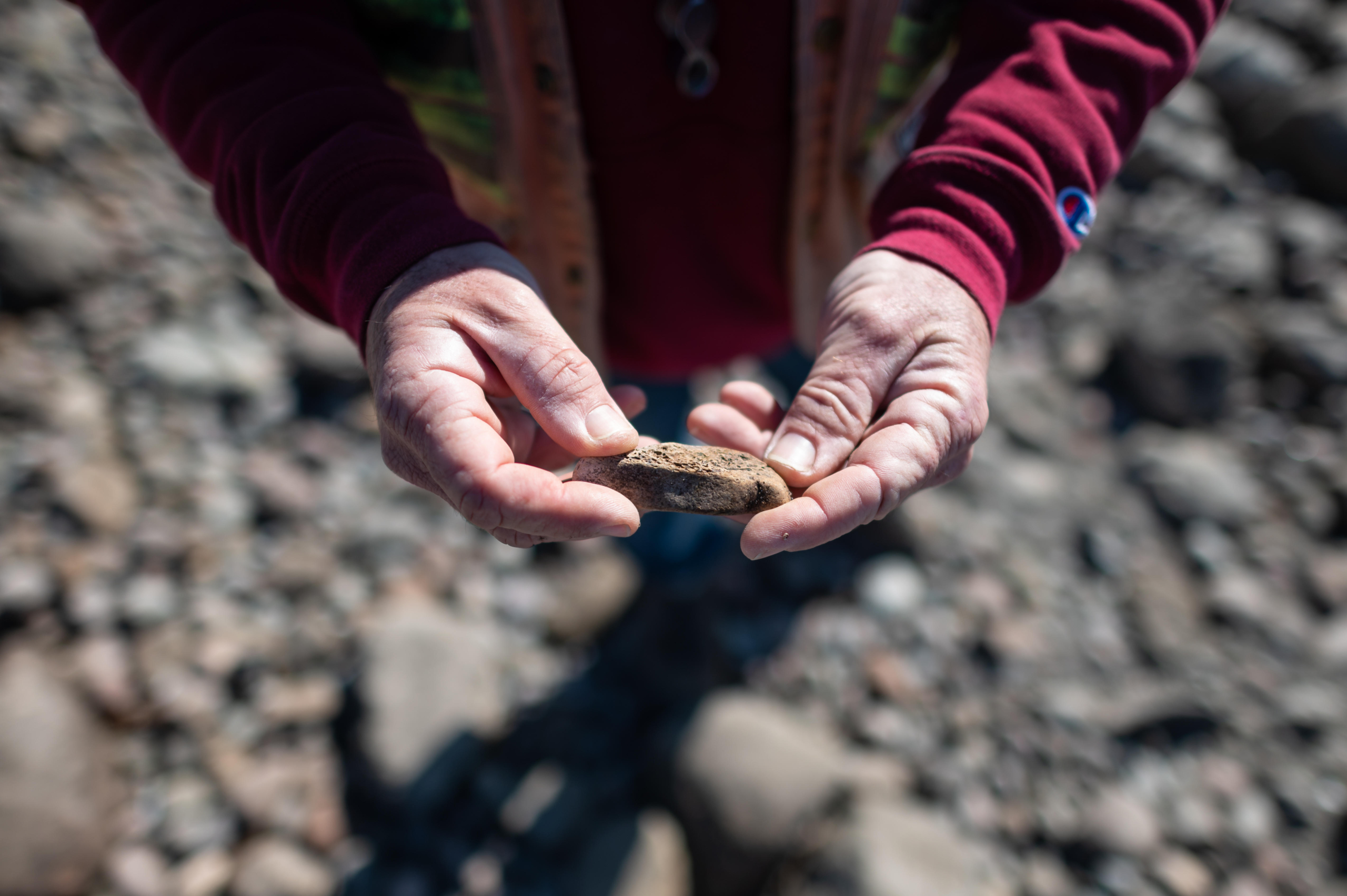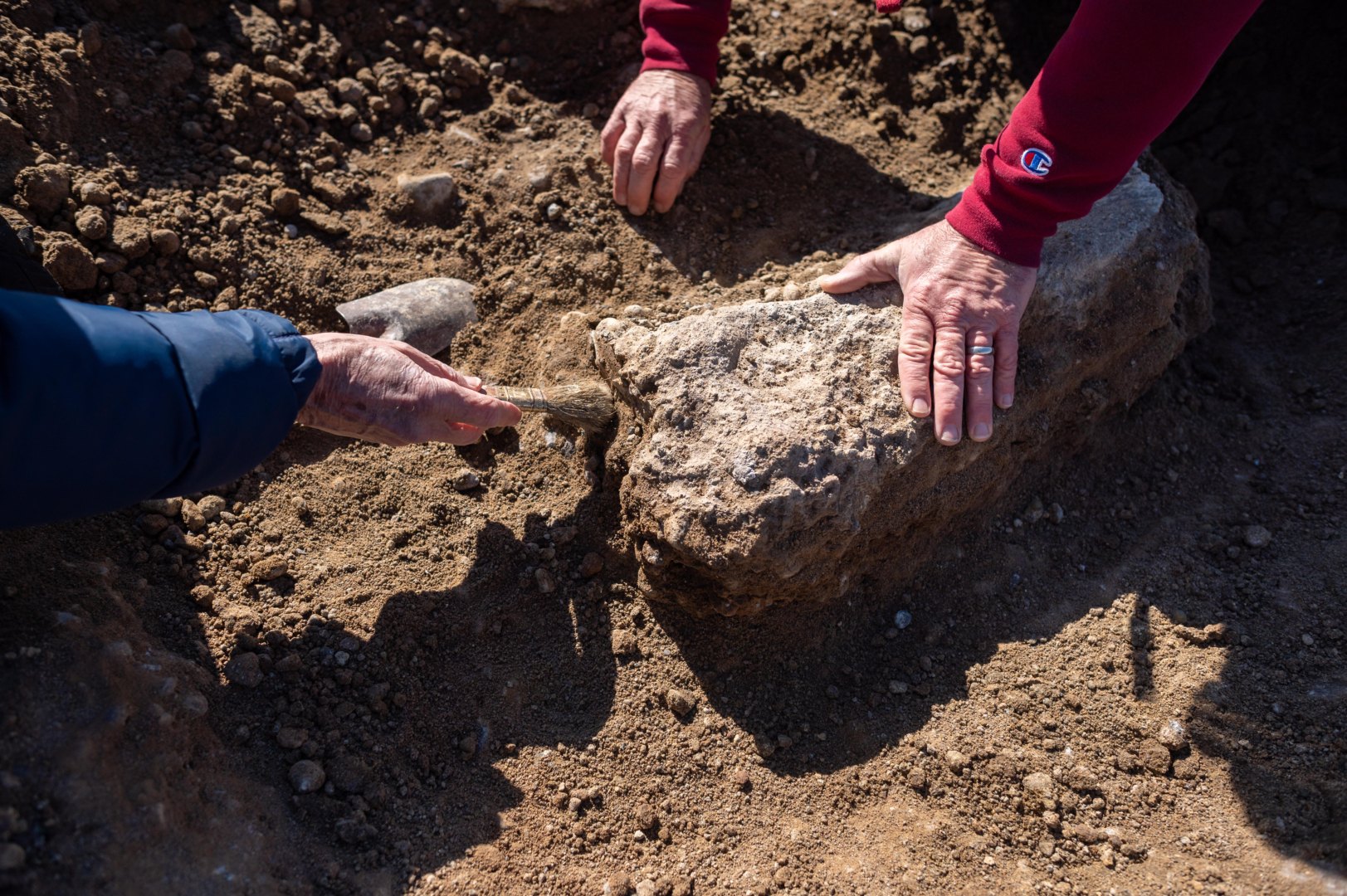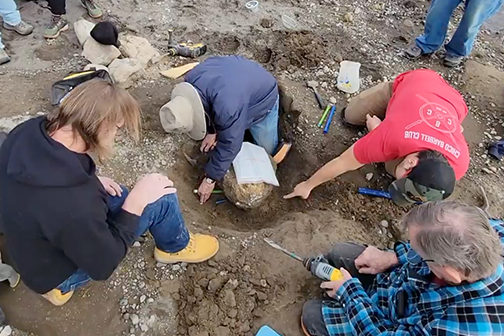Students, Faculty Embrace New Fossils from Ever-Growing ‘Miocene Zoo’ Site

Nature’s gifts just keep on giving.
After a drought-induced reveal of a treasure trove of Miocene-era fossils in early 2021, a deluge of recent rain exposed others lurking just below the surface. To date, more than 150 specimens have been recovered in the find, which is considered to be one of the largest discoveries of its kind in California. From mastodons and gomphotheres to camels and horses, the “Miocene Zoo,” as it was dubbed, still seems to have a lot of surprises in store.
“We have identified a lot of the bones and believe there are a few potential new genus and species,” said Sean Nies (Geology, ’16), the instructional support technician assisting with the project. “There has been a lot of new stuff exposed, so work to analyze the discoveries is becoming a thing again.”
Students, faculty, and staff from the Earth and Environmental Sciences Department trekked to the site numerous times in recent weeks to recover more specimens—including a horse’s skull—and continue mapping out what the fossils might tell the world about that moment in time.
“It just like building a picture on a grand scale,” said Bradley Cobian, a third-year geology major. “It’s great to say I found this rhino or this horse or this snail, but the reality of it is you don’t have a picture of it until you build the whole ecosystem lives in. It starts with the rocks and goes up to the plants and all the way up to the elephants.”

Cobian has been grateful to work with renowned fossil experts like Richard Hilton (MS, Geology, ’75) and professors Todd Greene and Russell Shapiro on the project, as well getting hands-on experience with artifacts as incredible as mastodons and gomphotheres that just a few years ago were hidden under the soil.
“As a kid, you look at them across a museum exhibit and think ‘That’s awesome,” but to actually touch and hold them is a wonderful feeling,” he said. “Then, to have the experience of identifying, cataloging, and mapping to get a foothold in paleontology, it bolsters my credibility as a future scientist.”
Cobian has helped identify a horse skull that he and others from Chico State retrieved in early February all the way down to the species level to determine where it might have lived in geological history. His ultimate goal is to map the fossils, how they occur in the layers they found, and the order in which they were preserved to build a paleo-ecological record of the discovery.
The mapping has been a great project to focus on while researchers waited for the opportunity to recover additional fossils, said Nies, who has supervised Cobian with his research.
“We are getting a much clearer picture of what was at the site and what it means for the ecology at the time: the environment, the food sources, etc., and just showing how diverse everything was,” Nies said. “There is some data that is left, but it brings up more questions than it solves, which is exciting because it means there is more work to be done.”
After recovering the horse skull, some of the crew stayed behind to conduct additional surveys and uncovered a new mastodon jaw with teeth that is now in the process of being prepped.

As students prepare to defend their theses or present at research symposiums and conferences, Nies didn’t want to disclose any spoilers of their findings, except to say that they have established really good data that maps out the paleo channel that brought down the debris flows to create the site.
“Everyone’s research is coming to conclusions, and we have gained a lot more information,” Nies said.
As the project progresses, Chico State is now collaborating with faculty and student researchers at CSU Stanislaus, University of California, Davis, University of Nevada, Reno, and University of Oregon. They now have 115 specimens at Chico State that have been officially cataloged, and East Bay Municipal Utility District, on whose land the discovery was made, has several dozens more, including a small jaw from a rodent-like animal they confidently believe is a new species.
Later this spring, Cobian is excited to present a poster and craft an abstract of what his research has found. He will continue the project into fall of his senior year, adding new finds and building better interpretations as he goes.
“I’ve always been a paleontology guy, interested in dinosaurs and that fun stuff. I’ve been told geology is a way to do it and I’ve enjoyed it ever since,” said Cobian, who aspires to work in mapping and consulting after completing his degree, and to eventually earn his master’s in paleontology, likely from a program in the fossil-heavy Midwest.
But for now, he’s thrilled to have such an incredible opportunity as an undergraduate right here in California. It was while taking “Invertebrate Paleontology” with Professor Russell Shapiro that he was offered the opportunity to do hands-on research in exchange for course credits. He had no idea it would lead to the Miocene Zoo project.
Since then, he’s split his internship hours a week between working in the Fossil Room of the Science Building and in the preparation studio at Gateway Science Museum. And on a few occasions, he’s traveled to the site itself to help with recovery, noting that fossil work is not for the faint of heart.
“It’s not how they portray it in the media. It’s not just luck and some guy there with a brush,” he said. “First you do a lick test—you literally lick it and see if it sticks to your tongue—and then you have to plaster it, cover it in tinfoil, and be careful as you are drilling. The amount of muscle work and delicate work was very surprising to me.”
The Fossils, Formations, and Extinctions exhibit at Gateway Science Museum, where dozens of the Miocene Zoo fossils are currently on display, will remain up through May.


